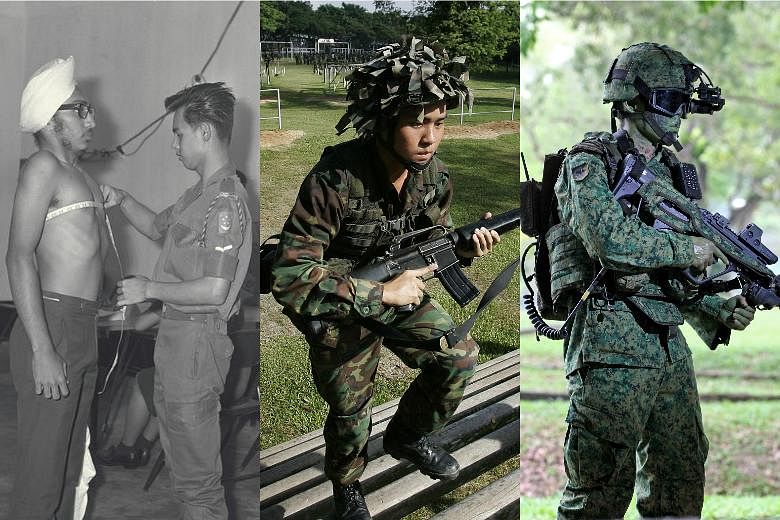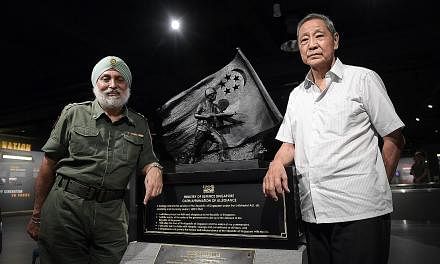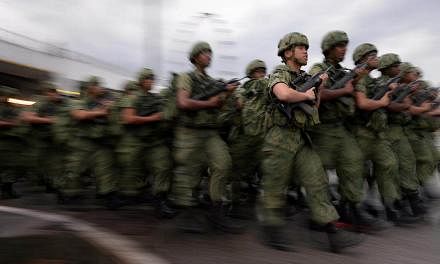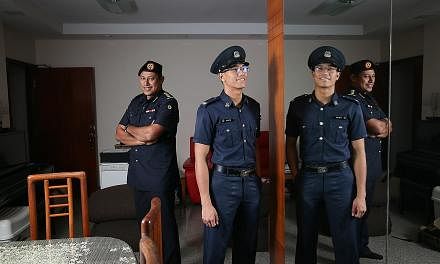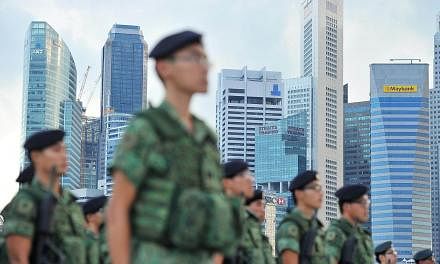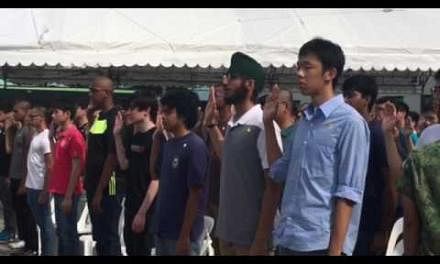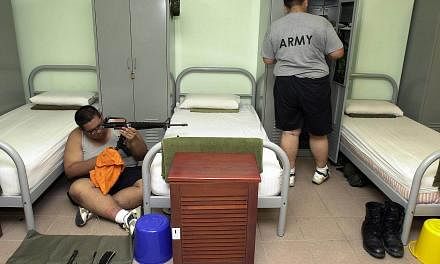SINGAPORE - This year, Singapore celebrates 50 years of national service (NS).
It began in 1967 to create a citizen military for a newly-independent nation, and about a million males have since experienced this rite of passage.
While its primary purpose is defence and security, NS has increasingly come to be seen as a key part of national identity.
Here are some facts about how things have changed since the beginning:
1. Put your best foot forward
NS now helps you put your best foot forward, literally.
Gone are the days of heavy, burdensome boots. Newer versions, the most recent being the Army Combat Boot and the Enhanced Combat Boot, are more rugged and durable than their predecessors.
When it comes to physical training footwear, it has evolved from old flat canvas shoes in the past.
With the latest editions, a New Balance for neutral to low-arch foot types and an Adidas for neutral to high-arch foot types, provide a superb degree of comfort and efficiency during exercise.
This, according to defence minister Dr Ng Eng Hen who is quite the social media influencer himself, as he posted a video on Facebook testing out the new footwear.
How #fitspo can he get?
2. Choose your destiny
If you're going to spend about two years serving the nation, you might as well do something you're interested in.
Since November last year, NS pre-enlistees can indicate their preferred choices from 33 vocations across the SAF, police and civil defence.
The vocations are grouped into seven categories, and while they cannot choose whether they go into the SAF, police or civil defence, they get to pick at least two choices from each category, or none should they prefer to.
3. Phone
A popular song by pop band Maroon 5 goes, "I'm at a payphone trying to call home", but gone are the days when recruits formed long lines waiting to make that precious phone call to their girlfriends or family.
These days, there are less restrictions on bringing personal smartphones and other electronic devices into camps.
Since the beginning of March last year, servicemen are allowed to use these devices in green zones in camps, such as cookhouses, bunks and medical centres.
Smartphones can even be used in red zones, which include unit operations rooms and offices with sensitive information, as long as the camera has been disabled.
This is something most NS men will definitely welcome, given that most people use smartphones these days.
In fact, you're probably reading this article on one right now.
4. Do less, for more
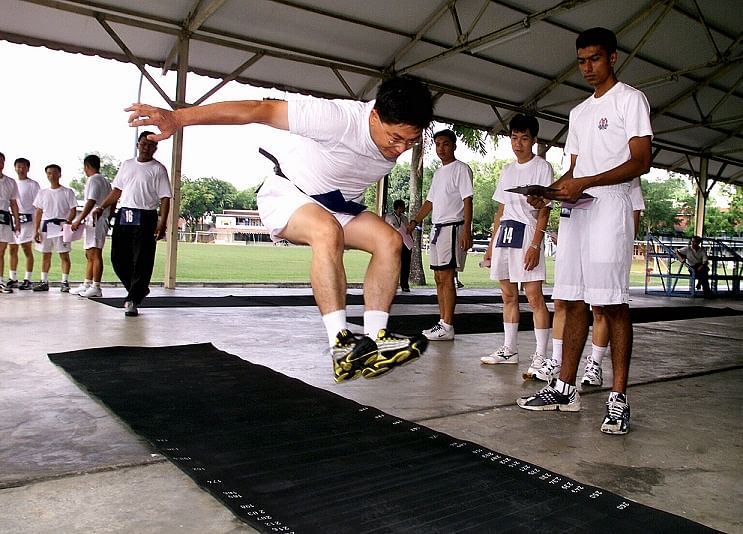
Four letters strike panic into some NS men's hearts - IPPT.
The Individual Physical Proficiency Test was introduced in 1980, to ensure servicemen kept fit. The annual fitness test used to comprise five stations - sit-ups, pull-ups, standing broad jump, shuttle run and the 2.4km run.
However from April 2015, a three-station test was introduced instead, with sit-ups, 2.4km run, and the newly-introduced push-ups.
The monetary incentive has also gone up by $100 across the board. Getting gold now earns you $500, while a pass with incentive brings $200.
You're basically doing more for less. How worth it.
5. Army can be yummy
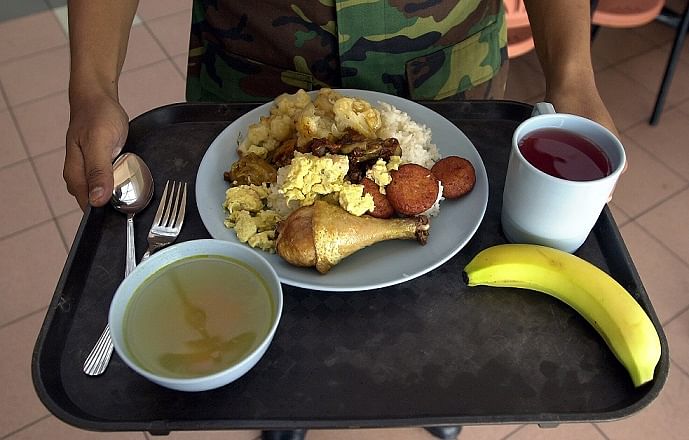
Food is a big part of Singapore's culture, so of course it was always going to turn up in this list.
The days of mundane meals with just rice, meat and vegetables cooked by military chefs are long gone, replaced by commercially-catered foodfare ranging from local hawker food to Western cuisine.
There is a common saying that those who enter the army inevitably emerge fitter, and for this, the food plays a role too.
The nutritional standard of every food item, such as the total calories of each meal, is calculated and approved by SAF, to provide servicemen with energy.
6. It's not just green
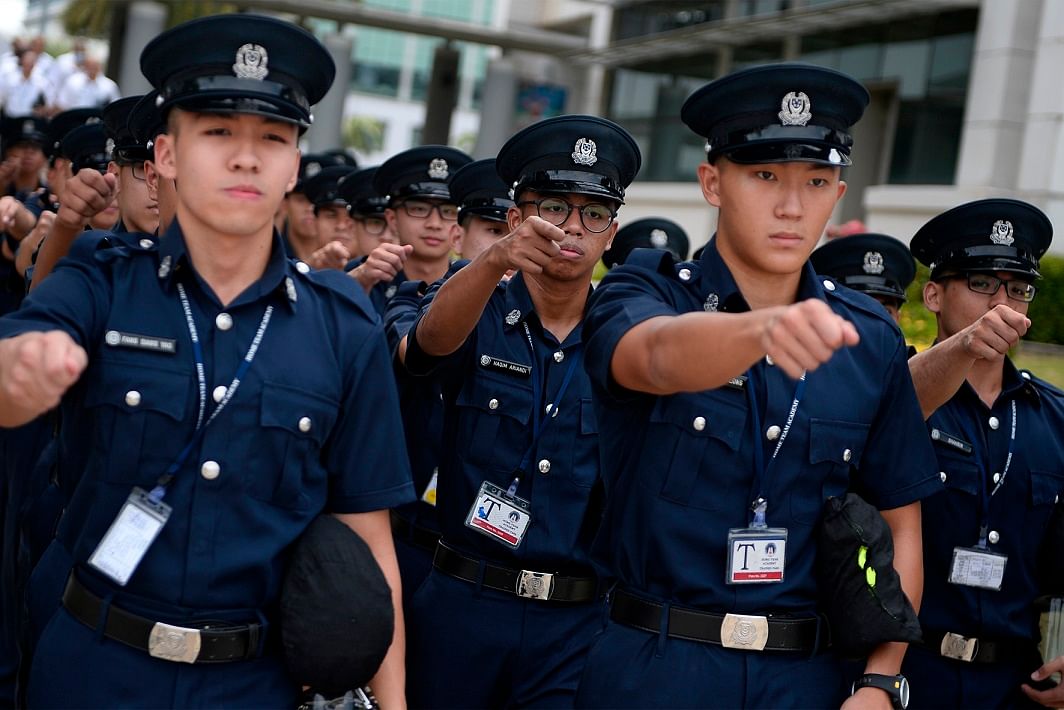
While the general idea of the first few months of national service is to sit on board a boat to Pulau Tekong, go through field camp and the like, and emerge from the island a full-fledged soldier, there's a sizeable portion of recruits who are enlisted directly into the Home Team services.
In 1975, the first intake of full-time police NS officers enlisted, and then in 1981, the same happened for the SCDF.
Here's a funny personal story.
Before my enlistment, I actually visited Pulau Tekong thrice. Once was during a school trip, another was to send my elder brother in, and the last one to send a friend in.
Lo and behold, when the time came for my own enlistment, I opened my letter with excitement and found out I had to report to the Home Team Academy in Choa Chua Kang.
7. Shortened stint
Full-time national service these days lasts for two years. Pre-enlistees who pass their National Physical Fitness Award (NAPFA) with silver or gold, get a two-month reduction from their national service.
However, this was not the case before. The duration was reduced from two and a half years - only in 2005 - due to training and technological improvements.
When NS was first introduced, officers had to serve three years, while other ranks served two years. It was only in 1971, that the duration was changed to two and a half years for those ranked Corporal and above.
Also, the term "reservist" was replaced with Operationally Ready National Servicemen in 1994, to better signify the operational readiness of our fighting force. However, most people these days, still use the word "reservist" out of habit.
